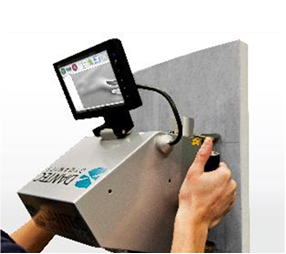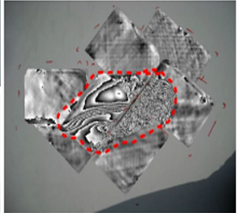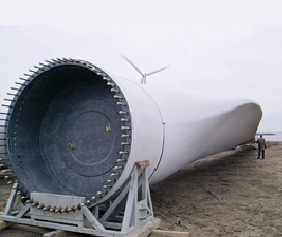Shearography is an optical, NDT technique that provides fast and accurate indications about internal material discontinuities or anomalies in non-homogenous materials. Using laser light, a shearing interferometer is able to detect extremely small (sub-μm) changes in surface out-of-plane deformation.
When a test object is subjected to an appropriate load, a proportional strain is induced onthe test surface. If underlying discontinuities are present, the surface will deform unevenly at these locations. This is then interpreted through the shearing interferometer as a change in the phase of the laser light.
During the production process various NDT quality control techniques are used. Shearography is one of the most effective method for finding defects in composite materials with a very high probability of detection rates. This assures aerospace manufacturers of enhanced quality results, beyond the capabilities of conventional NDT methods.


Our Shearography solutions are frequently proving their capabilities for composites testing in space and military aviation. With the dramatically increased usage of new lightweight composite material in civil and many other industrial applications this quick, intuitive inspection technology it now being utilized Industrial versatility, portability and ease of use combined with simple result interpretation allows NDT experts to extend their tool portfolio and explore new capabilities at comparable NDT technology budgets.


Shearography has been incorporated in ASNT standards since 2006. NAS 410 Certified since 2008. (SNT-TC1-A, and CP-105). ASTM standard (ASTM E2581) defines how to inspect composites with Shearography. Laser Shearography has been approved by leading suppliers in the aerospace, automotive, wind turbine and other industries.
Shearography is used in the Aerospace, Automotive, Wind Power, Marine, Aviation, Textile and other Composite related industries. Applicable materials include, but are not limited to: composite honeycomb, rubber, composite overwrapped pressure vessels (COPV), ceramics, glass-fiber laminates, metal honeycombs, carbon-fiber (CFRP) laminates, fiber-metal laminates, bi-metals, foam-cores, cork, leather and metal-metal bonds.